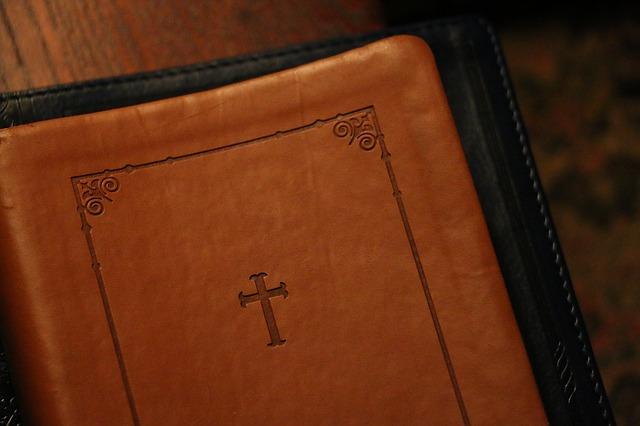Man is the image of God. He necessarily creates stories and enjoys them.
—Greg Uttinger, “The Lord of the Rings: A Good Story” (2012)
Deep comedy is a product of Christianity, a mark of resurrection life on the pages of Western literature.
—Peter Leithart, “Deep Comedy” (2006)
Introduction
I’ve discussed in broad terms the biblical foundations for many areas of life and thought, including the arts in general. Now let’s look at the narrower “art” of storytelling. As with all things we start with God … not just God as Creator, but in God as a personality and who He truly is. So we begin with the ontological and then the economic Trinity.
Sounds complicated, but all I’m saying is that from eternity God is a self-communicating God. The Father begets the Son. The Father and Son breathe forth the Holy Spirit to one another. You see this over and over in the Bible. That said, let’s look at the doctrine of the Son’s “eternal generation” a bit more closely.
Great Stories and The Ontological Trinity
The Son is the glow of the Father’s glory and the express image of His Person (Heb. 1:3). The Father looks upon His Son, and He is well pleased (Matt. 3:17; 12:18; Prov. 8:30). In other words, the Father communicates to the Son and Spirit without any loss in the communication itself. And … the Son doesn’t compromise the Father’s image or muddy up His glory in any way.
To understand the literary significance of this doctrine, we can contrast Christ the Son with the pagan deities … with Cronos who castrates his father or Zeus who does the same. With Isis who poisons her ancestor Ra and grabs his power. Or with Loki who raises the forces of chaos and death against Odin and his allies at Ragnarok. The pagan myths show us that the gods beget troubled children much to their sorrow. More broadly, these myths regard any move beyond the beginning as a misstep, a corruption of the ideal, a fall of sorts.
Christian Heroes For Christian Kids: These Amazing Stories Are Putting God Back Into History!
Mysticism in general echoes this thought stream. That’s why any frameworks that move away from original divinity always lead to distortion and loss. Only true, Trinitarian balance and harmony provide conceptualization for story. This understanding of deity creates a backdrop for “the happy ending” so crucial to traditional storytelling. Meaning … any move from the origin results in catastrophe and tragedy.
The biblical doctrine of the Trinity rejects the tragic endings implicit in pagan ontology. God’s self-communication does not end in failure but in glory. The Origin finds full and glorious expression in His complete Revelation. The Father is glorified in His well-beloved Son, and the Son rejoices in His Father (John 17).
The Covenant of Redemption: God as Storyteller
Just how the Son glorifies the Father, and the Father the Son, is the story of the Gospel. But that Gospel story has its origin in the eternal counsels of the Godhead.
Here’s what I mean by that: Scripture tells us of God’s eternal decrees. It places these decrees in the context of the eternal fellowship that is the Trinity. Before the world began, the Persons of the Godhead made promises to one another (Titus 1:2). They assumed obligations (John 14:31; 17:2). They took on roles. The Father gave the Son a people and instructions concerning them (John 17). The Son became the “Lamb slain from the foundation of the world” (Rev. 13:8; cf. 1 Pet. 1:19-20). The Holy Spirit agreed to wait on the earthly work of the Son and to come in His name (John 16:7-15; cf. 7:39). In eternity they agreed upon all this and much more.
In other words, before the world began, the Persons of the Trinity communicated to one another the nature of the history they would create. They communicated all that they would do, all that would happen, down to the smallest detail (Isa. 46:10; Acts 15:18). Not just that … they rejoiced in their plan. This is where Storytelling begins, but it isn’t where it ends. God made His story real: He created heaven and earth.
God’s Story: Setting, Conflict and Characters
Every story needs a setting. God set His story (primarily) on Earth. The story starts “in the beginning” and carries on to the Last Day, to the Resurrection and Final Judgment.
Now, stories as we understand them on this side of the Fall arise out of conflict. Guides to good reading usually list the more common conflicts: man v. man, man v. woman, man v. nature, man v. God or the gods, man v. himself, and so on. But all of these conflicts are the result of the Fall. In any given story, the specific conflicts either arise out of the sins of the characters or out of the common curse that afflicts men because of sin. Examples are legion but include battles with disease, wild beasts or natural disasters.
Conflict, of course, presupposes actors … heroes, villains, and victims (protagonists and antagonists). In God’s story, God Himself is the Hero. The apparent conflict He must resolve for us rises out of God’s justice and our sin. It is simply this: How can God be just and yet forgive rebellious sinners? God answers this question through the Gospel story as Christ battles Satan (the Dragon) for the life of world. This story unfolds through 4,000 years of redemptive history.
It is of course “a thriller” of a story and mystery as well. Only God in His infinite wisdom knew its solution, and He revealed it in Jesus Christ (1 Cor. 2:7-9; Rom. 16:25-26). It’s also an action/adventure story. The Son of God came into the world to wage war against the Dragon and to destroy his works (Matt. 4; Rev. 19). I suppose on some level it’s even a romance. The resolution of the story required the eternal Bridegroom to lay down His life for the Bride He loved (Eph. 5:28). Jesus Christ, then, is the archetypical Hero, who really does save the world (John 3:16-17).
God’s Story: Big Plotlines
God’s story begins with the creation of the world and man’s fall into sin. Here the conflict within history begins. But at the garden gate, God promises to rescue His people (the Bride), but He does not explain in any detail how He will manage it. He speaks obscurely of “the Seed of the Woman” and institutes sacrifice (a foreshadowing of the Cross). As redemptive history unfolds, we see the life-and-death struggle between the Woman and her seed and the Dragon and his seed. The Dragon tries again and again to seize the Bride and bring forth his own seed through her or to destroy her and her seed. Sometimes he nearly succeeds. Yikes! These attempts are all plot complications. They introduce tension and we experience suspense as we wait to see what God will do. And, of course, God always maintains His promise and rescues the seed … usually in some creative, unexpected, even humorous way.
The People Behind “Adventures In Odyssey” Have A New Project!
As the story reaches its climax, God steps into the story as a true man (the Incarnation). But His identity is concealed (the prince-in-disguise, nice!). He comes with an incredible plan, divine power and self-sacrificing love. He is the Prophet, King, and Priest of redemption. He dies for His Bride (the ultimate plot complication) and rises from the dead to save her (the ultimate plot reversal). The Hero ascends His throne, and the story rushes quickly to its dénouement (last bits of business and final explanations) in the book of Acts and the Epistles. As Revelation shows us, the King and His Bride live happily ever after (final resolution). God’s story is very deep comedy and about as far away from pagan tragedy as you can get.
Humans As Storytellers
God’s story is reality. Most of ours are not. But because we are made in God’s image, we are by nature … image bearers and sub-creators. We imitate our heavenly Father in devising sequenced events that always stay in our limited sphere. We do so to probe the nature of God’s world as well as our own hearts. We invent stories for wonder, for relaxation and escape. We also create stories that inspire growth in understanding and wisdom. And here’s the thing … the better our stories conform to God’s template … the more powerful and impactful they will be.
Obviously, not every story can imitate the archetype in all its dimensions. This is normal, proper and just makes good sense. After all, even Scripture contains stories within stories. And though the doctrine of the Trinity guarantees that the Gospel story ends in glory … it contains many stories of sadness and defeat. Why? Well, sin and death are real problems in this crazy temporal world of ours. But not forever. The literary universe in which the Christian writes is one of love, truth, and hope. It is one that allows our imaginations to soar beyond the stars … but keeps our hearts grounded in the holiness and love of the Triune God.
For Further Reading:
Francis Nigel Lee, The Central Significance of Culture (N. p.: Presbyterian and Reformed Publishing Company, 1976).
Henry R. Van Til, The Calvinistic Concept of Culture (Grand Rapids: Baker Book House Co., 1972).
Gene Edward Veith, Reading between the Lines, A Christian Guide to Literature (Wheaton, IL: Crossway Books, 1990).
Gene Edward Veith, Postmodern Times, A Christian Guide to Contemporary Thought and Culture (Wheaton, IL: Crossway Books, 1994).
Leland Ryken, The Christian Imagination (Grand Rapids: Baker Book House, 1981).
Leland Ryken, The Liberated Imagination, Thinking Christianly About the Arts (Wheaton, IL: Harold Shaw Publishers, 1989).
Leland Ryken, Realms of Gold: The Classics in Christian Perspective (Wheaton, IL: Harold Shaw Publishers, 1991).
Greg Uttinger, “The Trinity and Storytelling,” Chalcedon Report, Oct 2003, no. 456, Vallecito, CA.
Peter Leithart, Deep Comedy: Trinity, Tragedy, and Hope in Western Literature (Moscow, ID: Canon Press, 2006).
Richard Purtill, Lord of the Elves and Eldils: Fantasy and Philosophy in C. S. Lewis and J. R. R. Tolkien (Grand Rapids: Zondervan, 1974).
 Off The Grid News Better Ideas For Off The Grid Living
Off The Grid News Better Ideas For Off The Grid Living







